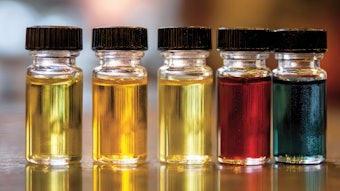Chromatography is a separation process long used at the laboratory scale. It is based on partition or adsorption equilibria. It uses a fixed bed, usually a column packed with small particles of an adsorbent or an inert support coated with 5-20% of a suitable nonvolatile liquid. A mobile phase (a gas in gas chromatography) percolates through the fixed bed and carries along a plug of the mixture. Each component of the mixture undergoes equilibrium with the stationary phase and appears at the column exit as a band of a certain width, depending on the column parameters, at a time which is a function of the equilibrium constant. The components of the mixture are diluted in the mobile phase and more or less separated from each other.
Chromatographic techniques are thus preparative in nature. Although in analytical applications the eluent is discarded after its composition is measured, it is in principle a simple operation to direct the separate zones to vessels where they can be recovered. Many theoretical, experimental, and technological problems arise, however, which have plagued the various teams who have tried to turn gas chromatography into an industrial separation process. We have solved these problems and present here results obtained with various pilot and demonstration units, working reliably for extended periods of time during the last years, unattended overnight, with production capacities between 2 and 15 t/year for those using 125 mm i.d. columns and 10 times larger for those using a 400 mm i.d. column.










